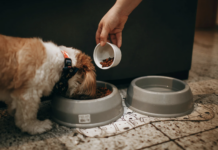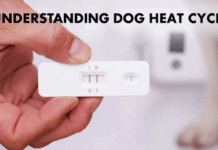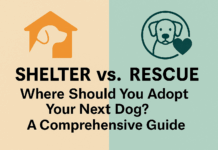Last Updated on July 2, 2023 by Dogs Vets
Toy Poodle full grown Dog
The Toy Poodle is the smallest version of the Poodle breed but has the same general temperament and physical characteristics as its standard and miniature counterparts.
Toy Poodles are a smart, active, and social breed that requires regular exercise and grooming.
Whether you’re already a fan or are holding back because they’re stereotyped as dog divas, we’ve got all the Toy Poodle facts you need for this intelligent and surprising breed.
Read Also: Cavapoo Full Grown
Toy Poodle FAQs
There’s a lot you’ll want to know about Toy Poodles before you get one.
Here are some of our readers’ most frequently asked questions about this popular breed.
- Do Toy Poodles make good family dogs?
- Do Toy Poodles shed?
- What health problems do toy poodles have?
- Are toy poodles affectionate?
Toy Poodle Overview
| Dog Body Size | Maximum of 10″ to the withers |
| Body Weight | 6 to 9 pounds |
| Lifespan | 12 – 15 years |
| Breed Type | Mixes and More |
| Main Purpose | Companion |
| Suitable For | Families, Singles, Couples Or Seniors |
| Color Types | White, Cream, Apricot, Brown, Red, Black, Silver And Parti |
| Behavior & Temperament | Lively, Playful, Intelligent, Loving, And Athletic |
| Other Names | Teddy Poodle, French Poodle, Barbone or Caniche |
Pros and Cons of a Poodle puppy
Pros:
- They are very easy to train.
- These dogs are very Friendly and well-tempered.
- This dog is considered as one of the smartest dog breeds.
- They excel in agility.
- They do Minimal shedding.
Cons:
- This breed can bark a lot.
- This breed suffers from loneliness & anxiety.
- They are prone to causing destruction if they are left alone.
- These dog breeds are not suitable for young children.
The Miniature Poodle Dog Appearance, Height and Weight
Poodles come in three sizes: standards should be more than 15 inches tall at the shoulder; Miniatures are 15 inches or less; toy stands no more than 10 inches. All three varieties have the same conformation and proportions.
At dog shows, Poodles are usually seen in the elaborate Continental clip.
Most pet owners prefer the simpler sport clip, where the coat is clipped to follow the contours of the squarely built, muscular body.

Forget those old stereotypes of Poodles as sissy dogs. Poodles are eager, athletic, and incredibly smart “real dogs” of remarkable versatility. With an abundance of consistent character and intelligence, the Miniature Poodle is a “person” and expects to be treated like one.
Weight
We’ve looked at size, but how much should such a small breed weigh?
In general, healthy Miniature Poodles weigh between 4 and 6 pounds. This is again less than a Miniature Poodle, which should weigh between 10 and 15 pounds.
Overall Poodle Dog Appearance
In general, your Miniature Poodle should look square and well-proportioned.
They have dark, oval eyes, and their ears hang close to their heads. Miniature Poodles have long, straight muzzles and, of course, a very distinctive coat.

Toy Poodle full grown Dog – Poodle Grooming
Unless you plan to keep your poodle in a short-cut, you will need to learn how to brush him daily to keep his coat from becoming dull.
If you don’t brush and comb a full-coated Poodle completely to the skin, the hair near the roots will become dull and need to be shaved to start over with new growth. Most pet owners choose to keep the poodle shorter.
Some owners learn to do this clipping and trimming themselves, while others take their dog to a professional groomer every four to 6-weeks for a bath, grooming, and nail trimming. The breed’s relatively non-shedding coat makes it a good choice for people with allergies.
Poodle puppy Coat Colors
The AKC recognises a staggering ten standard Poodle colours:
- apricot
- black
- blue
- brown
- cream
- gray
- red
- silver
- silver beige
- and white!
Caring for a Poodle puppy
No matter what size poodle has stolen your heart, you want to give it the best dog food possible.
Your veterinarian or breeder can help you choose the right food for your dog’s age, activity level, and size.
Some dogs tend to become overweight. Therefore, pay attention to your dog’s calorie consumption and weight level.
If you choose to give your dog treats, do so in moderation. Treats can be an important aid in training, but too many can lead to obesity.
Never feed a dog cooked bones or fatty leftovers. Learn which human foods are safe for dogs and which are not.
Check with your veterinarian if you have concerns about your dog’s weight or diet.

Exercise
Poodles of all sizes are very active dogs that need good exercise every day to keep up with their high energy levels. Poodles are eager for all types of activities and like to keep themselves busy.
Swimming is great exercise for them and most Poodles love to get in the water. Bred as hunting dogs, their impulse is to retrieve.
So when they throw toys, sticks or balls for them, they are exercising their minds as well as their bodies. They also thrive on going for jogs or long walks with their human.
Toy Poodle full grown Dog Training
Miniature Poodles are exceptionally intelligent and easy to train dog breeds. They are agile and graceful as well as smart, and they enjoy and excel at a variety of dog sports, including agility, obedience, and tracking.
They are excellent water retrievers and also participate in dock diving and retriever hunting tests.
Poodles are very people-oriented and if your training routines are fun and positive, they will quickly take a liking to you. Just make sure you are consistent with your requirements.
Toy Poodle full grown Dog Health
Most Miniature Poodles live long, happy, healthy lives thanks to the efforts of dedicated, responsible breeders who routinely test all breeding stock.
However, as with all breeds, some health problems can occur, including hip dysplasia and various eye diseases.
Occasionally, idiopathic epilepsy, sebaceous adenitis, von Willebrand’s disease, and immune-mediated diseases also occur in the breed.
Two orthopedic problems, Legg-Calve-Perthes and luxating patellas, are more common in Toy and Miniature Poodles than in Standard breed.

Health Tests Recommended for the Poodle breed by The National Breed Club:
- Ophthalmologist Evaluation (Miniature, Standard, and Toy).
- PRA Optigen DNA Test (Miniature and Toy)
- Patella Evaluation (Miniature and Toy)
Interesting facts about the toy poodles
Poodles are loved by everyone throughout the history of the world.
In fact, they were even a most favorite pet breed for celebrities and royalty!
The late singer Elvis Presley was one of those famous poodle lovers! He adored Poodles so much that he often gave them to his loved ones.
Elvis Presley gave an early girlfriend a Toy Poodle named Little Bit, gave his mother a Toy Poodle named Duke, and gave his wife Priscilla Presley a Toy Poodle named Honey!
Teacup Toy Poodle

While there are no official breed standards listed, the rule of thumb is that a teacup poodle is 9 inches tall and weighs less than 6 pounds, while a toy breed weighs less than 10 inches. Their breed looks very elegant no matter what size they are, and they are always at the ready.
See also: Top 5 signs that a dog is dying – dog behavior before death
QUESTIONS PEOPLE ARE ASKING ABOUT TOY POODLES
What is the size of a fully grown Toy Poodle?
10 inches in height
The Toy Poodle can grow to be up to 10 inches tall and weigh between six and nine pounds, depending on the breed. When fully grown, the Miniature Poodle is 11 to 15 inches tall and weighs between 15 and 17 pounds.
What is the best way to tell if my dog is a Toy Poodle?
Standard Poodles are over 15 inches (38 cm) tall, with males weighing 60–70 pounds (27–32 kg) and females weighing 40–50 pounds (18–23 kg).
Standard Poodles have a bodyweight of 60–70 pounds (27–32 kg) and a height of over 15 inches (38 cm). Small Poodles range in height from 10 to 15 inches (25 to 38 cm) in height and weight from 10 to 15 pounds (4.5–6.8 kg).
Toy Poodles are less than 10 inches (25 cm) tall and weigh 4–6 pounds (1.8–2.7 kg). They are smaller than standard Poodles.
Do Toy Poodles have a bad attitude?
Toys and miniatures are included. Poodles are particularly prone to fear-based aggressiveness, which makes them very dangerous. Because of their small stature, they are especially vulnerable to physical handling and taunting by children.
Are Toy Poodles calm?
Toy Poodles are calm, sensitive canines that prefer to live in a serene, happy environment.
Is it true that toy poodles are playful?
Poodle’s personality and temperament are important factors to consider.
This breed is extremely loyal to its owners and their children. Some dogs can be timid in the presence of strangers, while others may bark excessively.
In addition to being one of the brightest breeds, the energetic and vivacious “Toy Poodle” is a joy to teach since it is eager to please, attentive and alert, sensitive and playful, as well as vibrantly alive.
When does a Toy Poodle stop growing?
When do toy poodles reach the point where they stop growing? Toy Poodles reach their adult size at approximately 6-7 months of age. When they reach their full height, they will continue to fill out and gain weight until they reach their ideal weight.
Upon reaching maturity, a Toy Poodle will stand no taller than 10 inches from the shoulder and weigh no more than 4-6 pounds.
Are Toy Poodles aggressive?
Poodles are not normally aggressive creatures, but they can acquire anxiety, which can manifest itself in aggressive behavior when they are threatened.
When these dogs become worried, they may also become scared, which can cause them to view everyone as a potential threat to their well-being. They can also experience separation anxiety if they are apart from their owners for an extended period of time.
Is it possible to train Toy Poodles?
Your Toy Poodle is the smallest of the Poodle breeds, and he is a highly trainable, extremely bright, athletic, and adaptable dog.
Your Toy Poodle may have been chosen because they are affectionate and devoted friends that make ideal dogs for compact living areas, but your dog’s forebears were much larger in stature.
Do toy poodles bark a lot?
Barking is normal for a Poodle under these conditions, as it is normal for most dogs in these circumstances.
To keep your peace and the serenity of everyone else in your household and area, you can train your Poodle to stop barking, especially if the barking is inappropriate.
What is it about poodles that makes them so annoying?
It is common for them to experience separation anxiety, and because they are “poodle clever,” they can be extremely destructive if left alone.
Toys poodles are considered obnoxious and clinging, and they want attention. They have a tendency to be dog aggressive and require frequent and meticulous training. They are among the most frequently reported breeds in dog bite cases.
Do Toy Poodles enjoy being cuddled?
For decades, Toy Poodles have brought companionship and warmth to families via their friendly and active personalities. They are excellent at obedience work because they are natural learners.
However, don’t underestimate their excitement for cuddle time. The majority of poodles will cuddle you all night if they are permitted to do so.
Why are Toy Poodles so attached to their owners?
Clingy behavior that appears all of a sudden and intense
Most Poodles will cling to their owners for a short period of time, but will gradually revert to their normal behavior over a period of minutes to several hours.
Anytime a Poodle is teased or bullied, he may become overly attached to his owner whenever the issue is removed from his control.
Is it possible for Toy Poodles to become jealous?
Incredibly intelligent and devoted canines, poodles exhibit a range of emotions as well as high levels of intelligence and loyalty.
Poodles, like people, can experience emotions such as sadness, depression, excitement, happiness, boredom, overwhelm, and even jealousy.
Are Toy Poodles temperamental?
Poodles have a wonderful temperament and are extremely intelligent. They tend to consider themselves an important part of the family, they have strong personalities and pick up on new information quickly and easily. They will become legitimately enraged if they believe they are being excluded from family gatherings and activities.
What is causing my brown poodle to turn white?
Poodle hair turning white is sometimes a sign of advanced age, but it is not always the result of this.
Some poodle puppies are born with a mutation on a gene that causes a dog that is born black or brown to begin to turn grey or white silver at the age of three months, depending on the breed. By the time they reach maturity, these dogs are usually completely white, silver, or grey.
Are Poodles good companions in the home?
Poodles make excellent family dogs because they are generally friendly and accepting of other animals in the home. They are gentle and polite with children, but due to their hypersensitive nature, they can be easily overwhelmed by small, boisterous children and will require some time to recover from the experience.
What are the 7 different dog commands?
To become a good canine citizen, a well-mannered puppy must respond to 7 precise commands: Sit, Down, Stay, Come, Heel, Off, and No.
What further skills can I teach my dog?
Teaching your dog to shake, roll over, spin, beg, or take a bow is psychologically exciting for the dog, a great way to strengthen your bond, and an effective way to teach basic directions.
Even a novice can teach a puppy or mature dog to perform some entertaining canine tricks. In addition, it is a lot of fun to teach a dog cool tricks to show off to friends!
How can I teach my dog the yes and no commands?
Teaching your dog to say “no” is comparable to teaching it to say “yes.” Use your fist with your index finger extended, similar to when you tell a child no or chastise them.
Repeat the same procedure as with the “yes” signal, but instead of moving up and down, move very slowly from side to side.
Fact Check
We strive to provide the latest valuable information for pet lovers with accuracy and fairness. If you would like to add to this post or advertise with us, don’t hesitate reach us. If you see something that doesn’t look right, contact us!
Reference: Thehappypuppysite

















